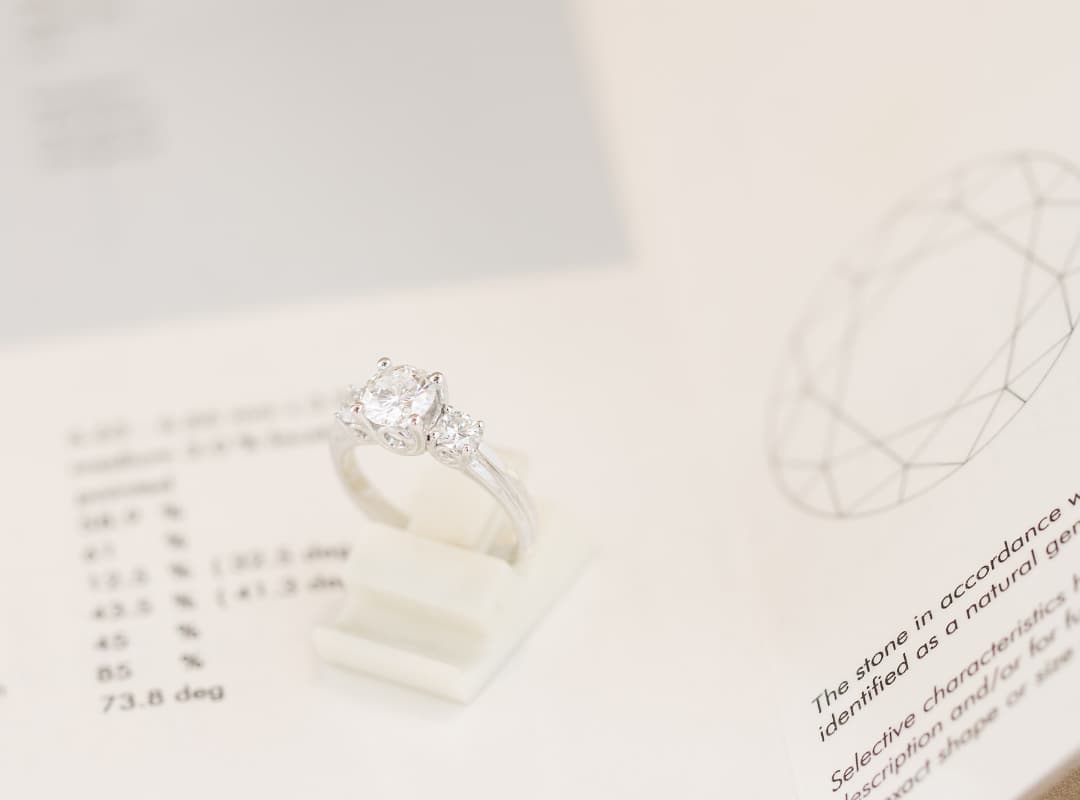Ultimate Guide to Diamond Certification
Diamond certification is the trusted passport of a gemstone, a detailed document that outlines a diamond’s quality, authenticity, and characteristics. Understanding diamond certification is key to making an informed and confident purchase.

What is a Diamond Certificate?
A diamond certificate—also known as a grading report—is an independent, professional assessment of a diamond’s attributes. It verifies that a diamond has been examined by experts using strict criteria and provides a comprehensive breakdown of its 4Cs: cut, colour, clarity, and carat weight.
The certificate should also include a plotted diagram of the diamond’s inclusions (internal features) and blemishes (external features), giving buyers complete transparency about what they are purchasing.
Certification Laboratories
-
GIA
Gemological Institute of America
Widely considered the world leaders in diamond grading, the GIA introduced the 4Cs system and remains the most trusted name globally. A GIA certificate is a hallmark of integrity and precision.
-
IGI
International Gemological Institute
Popular in Europe and Asia, IGI certificates are often used for commercial jewellery. While generally reliable, grading may be slightly more lenient than GIA -
HRD
Hoge Raad voor Diamant (Diamond High Council)
Based in Antwerp, HRD is a leading lab in Europe and is often used by dealers and jewellers for European markets. Like IGI reports, HRD grading may be slightly more lenient than GIA
-
EDR
European Diamond & Gemstone Reports
EDR is a local Hatton Garden based Diamond laboratory. They provide an independent grading assessment of Diamonds for peace-of-mind in a purchase, but are not as widely recognised as GIA, IGI or HRD.

Beyond the Certificate
While certification provides valuable insight, it’s important not to become too fixated on every technical detail or numeric grade.
Some buyers fall into the trap of chasing perfection on paper—insisting on only ‘Excellent’ cuts or ‘VS1’ clarity grades—when in reality, the difference between one grade and the next is often imperceptible to the naked eye. A well-cut diamond with a slightly lower grade on paper can sometimes outshine a technically superior stone. In the end, what matters most is how the diamond makes you feel when you see it.

Diamonds Without a Certificate
Not every beautiful diamond comes with a certificate. Particularly with antique or heirloom stones—but their charm and visual appeal can be undeniable. If a diamond captivates you, speaks to you, or simply looks stunning, it may be worth considering—even without a report.

Certification vs. Appraisal
It’s important not to confuse a diamond certificate with a jewellery appraisal. While a certificate assesses the stone’s physical characteristics, an appraisal estimates its monetary value—which can fluctuate based on market trends, brand name, or craftsmanship.
Choosing a diamond is both a personal and meaningful decision. While certification provides a helpful starting point, we recommend speaking with experienced professionals who can explain the nuances, answer your questions, and help you make sense of the details. Understanding what matters most to you—beyond the technical specifications—can help you make the right choice with confidence.

